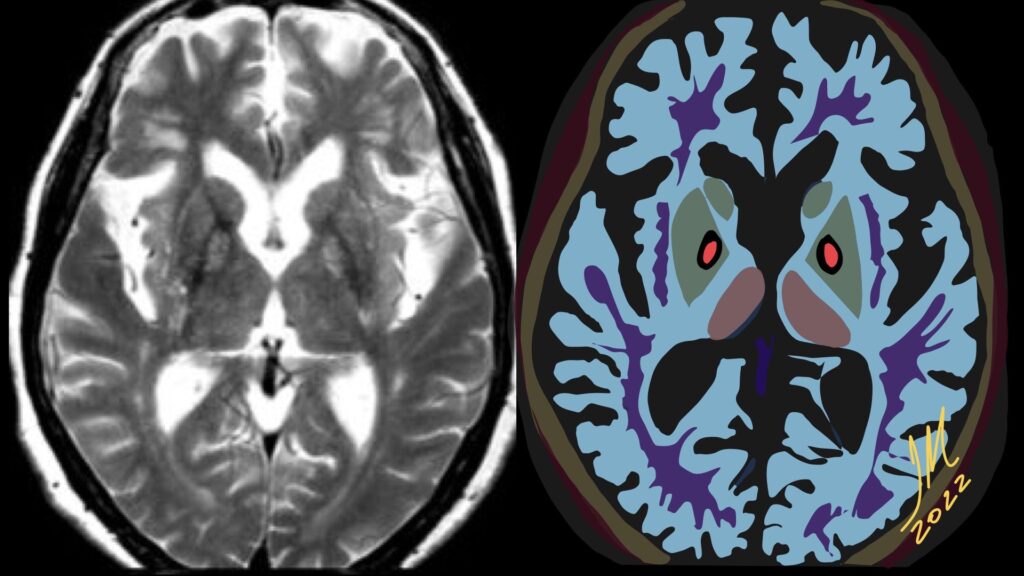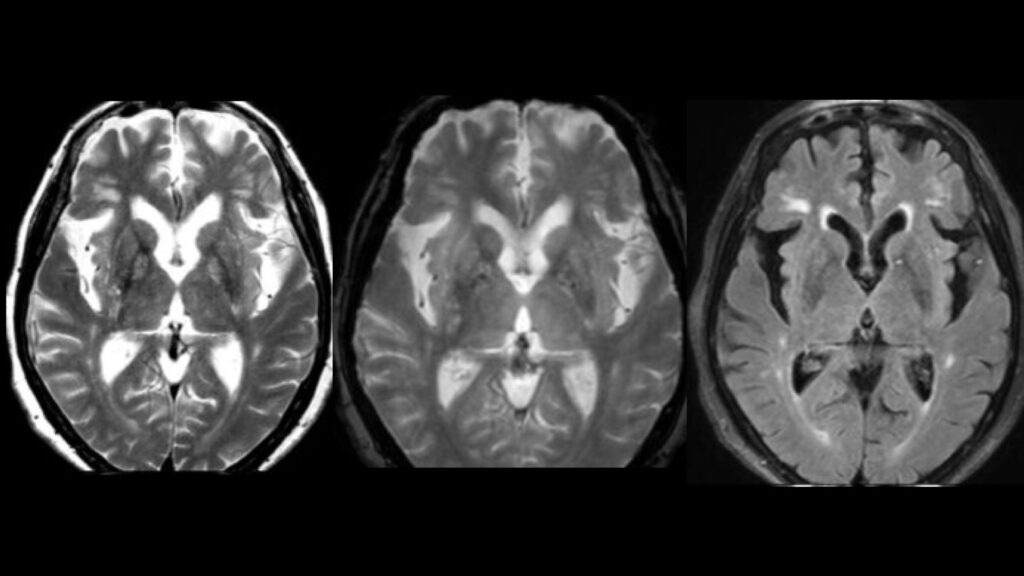
Hallervorden-Spatz disease now known as pantothenate kinase-associated neurodegeneration is a rare autosomal recessive neurodegenerative disorder associated with iron accumulation in the brain nuclei and characterized by progressive extrapyramidal dysfunction and dementia.
Is the standard in the diagnostic evaluation of all forms of Neurodegeneration with brain iron accumulation. It has significantly increased the likelihood of a diagnosis of PKAN.
Imaging findings are most conspicuous on T2W-SWI-GRE sequences which demonstrate hypointensity reflecting areas of iron deposition, mainly in globi pallidi, pars reticulata of the substantia nigra, and red nuclei.
Studies report that all patients with PANK2 mutations, whether classic or atypical, have the characteristic radiologic sign known as «eye of the tiger» on brain MRI, which is evident as bilateral symmetrical, central foci of hyperintense signals in the anteromedial globus pallidus, with surrounding zone of hypointensity in the globus pallidus on T2W MR scanning. The central T2 relatively hyperintense spot or line within the globi pallidi is due to gliosis and vacuolation.

This sign was not reported in patients without PANK2 mutations. Cortex is usually spared, but atrophy can be seen in advanced cases. SWI-GRE Show susceptibility artifact (blooming low signal) in corresponding areas due to iron accretion. MR spectroscopy shows decreased NAA peak due to neuronal loss and may depict increased myoinositol.
Patients with mutations in the PANK2 gene can be distinguished from patients without the mutation by their specific brain MR imaging changes, even very early in disease.
Reference:
S.J. Hayflick, M. Hartman, J. Coryell, J. Gitschier and H. Rowley. American Journal of Neuroradiology June 2006, 27 (6) 1230-1233;